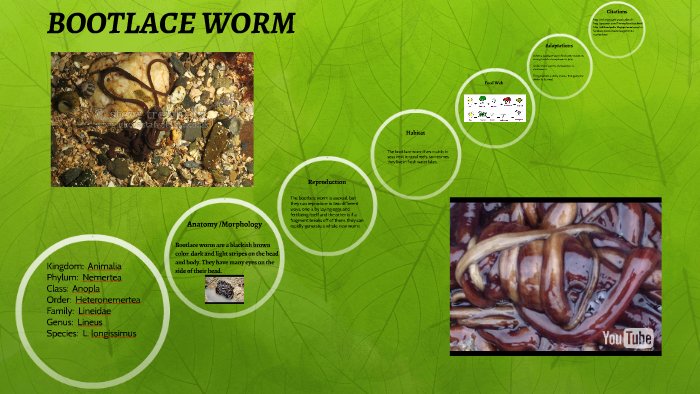
Let’s think of bootlace worms like the ultimate seasonal travelers. They adapt to their surroundings, moving through the waters and sediments that best support their existence. With their elaborate form, these worms thrive in various environments throughout the year. So, if you’re curious about where they go and what they prefer during different seasons, let’s dive in!
What Are Bootlace Worms?
Bootlace worms, known scientifically as *Lineus longissimus*, are among the longest animals on Earth. They can stretch up to 55 meters in length! These marine creatures are mainly found in the coastal waters of Europe, particularly around the UK. Imagine hopping from one end of a football field to the other—that’s the kind of journey these worms can make in a single body!
These worms are fascinating for more than just their size. They have a unique body structure made up of numerous segments. This design is what allows them to move fluidly through their environments, whether they’re navigating through a soft sea bed or wriggling through a sandy shore. The bootlace worm is a true exemplar of adaptability, making it essential to study how their habitat preferences shift with the seasons.
Spring: A Time for Growth
As spring arrives, bootlace worms become more active. During this season, you might find them lingering in areas with softer sediments, which provide a nurturing environment. The water begins to warm up, and food sources like phytoplankton start to flourish, making it an ideal time for worms to emerge from their winter hiding spots.
Spring is also when these worms engage in reproductive behavior. They often seek out specific water temperatures and salinity levels for spawning. You might picture them like a flower blooming, eager to take advantage of the abundance of resources available. This means you’ll likely find them in shallower waters where sunlight can penetrate, promoting growth in nearby plant life, which ultimately supports the bootlace worm’s diet.
Summer: Thriving in Warm Waters
As summer rolls in, bootlace worms are in their element! The warmer temperatures mean higher activity levels. During this time, these creatures often expand their habitats, moving into deeper waters where nutrient-rich currents flow. It’s like they’re throwing a party, welcoming more friends (and food) into their world.
In summer, these worms seek out areas with plenty of organic materials, like decomposing animals and plants. It’s an all-you-can-eat buffet! The bootlace worms feast on this nourishment, growing larger and stronger. However, you’ll also notice them becoming more selective about their environments. They prefer spaces that offer a mix of soft and hard substrates, ensuring they can anchor themselves while feeding. The delicate dance of nature plays out, as they find the perfect spot to thrive.
Autumn: Preparing for Change
As autumn settles in, the waters begin to cool, and the ecosystem starts changing. This is the time when bootlace worms begin to retreat to their preferred habitats. Think of it like packing up for a long winter vacation. They often migrate to deeper, more stable environments that provide shelter and protection from harsher conditions.
In this season, food sources may dwindle, pushing the worms to adapt their diets. They become opportunistic feeders, scavenging for whatever they can find. It’s a bit like rummaging through your pantry when you realize you’re low on groceries. They’ll stick to areas with plenty of detritus—decomposing organic matter that holds vital nutrients. This choice helps them maintain energy reserves as they prepare for the winter ahead.
Winter: A Time of Dormancy
When winter arrives, many creatures slow down, and bootlace worms are no exception. The colder temperatures often push these worms into a state of dormancy. They bury themselves deeper into the seabed, seeking solace in the soft sediment where they can sustain themselves until spring.
During this time, food is scarce. The worms rely on stored energy, making smart choices about conserving resources. They may also experience changes in their physiology, adapting to the lower temperatures and reduced activity levels. You can envision them like a bear hibernating, waiting patiently for the warmth of spring to awaken their vibrant lives once more.
Factors Influencing Habitat Choice
Throughout the year, bootlace worms’ habitat preferences are influenced by several factors, including temperature, salinity, and food availability. Here’s a closer look at how these components play a role:
- Temperature: Warmer waters provide a more active environment. Bootlace worms thrive at specific temperatures, which dictate their feeding and breeding habits.
- Salinity: These worms prefer brackish waters, often found in estuaries where freshwater and saltwater mix. Changes in salinity can alter their habitat preferences.
- Food Availability: The presence of organic matter significantly impacts their movements. Bootlace worms adapt their habitats to remain close to nutritious sources.
Understanding these factors helps us appreciate how these unique creatures are in tune with their environment.
Why Habitat Preference Matters
Studying the habitat preferences of bootlace worms is not just an academic exercise; it has real implications for environmental health. These worms play a crucial role in the ecosystem. They help break down organic materials, contributing to nutrient cycling and maintaining the health of marine environments.
By observing how seasonal changes affect their habitats, scientists can gain insights into broader ecological patterns. If bootlace worms are thriving or struggling, it often indicates the state of their surroundings. For example, a decline in their populations could signal shifts in water quality or the impacts of climate change.
In essence, keeping an eye on bootlace worms gives us a window into the health of our oceans, allowing us to make more informed decisions about conservation efforts.
In conclusion, bootlace worms are not just fascinating marine beings; they are indicators of environmental change, reflecting the ebb and flow of their habitats throughout the seasons. By understanding their preferences, we can appreciate the intricate dance of life beneath the waves. Whether you’re studying marine biology or just soaking in nature, these worms remind us of the beauty and complexity of ecosystems.
